|
This is part 4 of a seasonal look into the energetics of each season and how they affect our inner and outer worlds. In Traditional Chinese Medicine (TCM), The 5 Elements Theory, invites us to live more in flow and alignment with the seasons and offers us the opportunity to link ourselves more to the natural world and to become more aware of ourselves, the world around us and our role within it. The five elements through the lens of TCM - wood, fire, earth, metal, water - represent the cyclical changes of nature. The cycles we see in nature are interconnected with those we experience as humans. The flow of the cycles manifest in many ways and are reflected in our energy, creativity, emotions, ease and dis-ease, expression, foods, tastes and colours we seek and crave. Each season is linked to an element and a set of organs that need a little more care and nourishment in that specific season. Health conditions and/or emotions related to the specific organs may also flare up but there are many things we can do to support our body through the cyclical changes that also manifest within us. Learning about each element may enable us to create more internal balance which will improve all areas of health whether physical, mental or emotional. Yin & Yang and late summer The Yin and Yang theory is the underlying principle of Traditional Chinese Medicine (TCM) and Philosophy, the Taoist culture. Everything is composed of opposites, relative to each other, complementary and as constantly interacting forces. One cannot exist without the other. There is no night without day, no heaven without earth, no moon without sun, no up without down, no out without in, no cold without warmth, no youth without age, no opposition without unity, no stillness without noise, no passive without active. Late summer is the beginning of the transition between summer - the most yang (hot, bright, active) in nature - and winter - the most yin (cool, quiet, dark, reflective) in nature. Days become a little shorter, nature around us starts to change, intense transformations happen within and without us. It's a time for centering, nurturing and simplicity and it's time to prepare and start slowing down. In TCM, good health is believed to come from a balance of Yin and Yang. Too much or too little of one or both will cause imbalances throughout the body and will manifest in physical, mental and/or emotional dis-eases. The Earth element In TCM and according to the 5 Elements Theory, the Earth element is associated with late summer (a season of its own) and the Stomach and the Spleen. Element: Earth Organs: Stomach and Spleen Colour: Yellow, orange Taste: Sweet → nourishing, building, harmonising, calming, relaxing, strengthening, stimulates gentle circulation, tonifies Yin. Positive emotion: Compassion, empathy, rational, clear-headed Negative emotion: Worry, anxiety, feeling unresourceful, foggy, self-pity In TCM the stomach receives and ripens ingested food and fluid. The Spleen is considered the "Official of Granaries", it rules transformation and transportation of the energy of what is ingested. As mentioned, the Earth element is a time of transition and transformation, a metamorphosis of sorts. There's a downward and inward energy. We may be looking for more nourishment after the excesses of summer, we may seek more balance, routine and stability in our daily lives. And it's harvest time, an important preparation phase for winter. In its central position the Earth is the pivot for all of the other Elements which encircle and spin around it. It is a place of stability within the body, mind, and spirit. From this stable anchor, change and growth can take place. Our food can be transformed and processed by the Stomach and Spleen and turned into qi that nourishes the mind, body, and spirit When the Earth element is balanced we feel stable and safe in life, we become grounded within ourselves and in our environment. There's a sense of peace despite ups and downs, we're not easily destabilised emotionally An imbalanced Earth element can manifest in different ways. Where the Earth element is too strong we lose interest in life or in doing anything. We stagnate and don't move out of our comfort zone. On the other side, if the Earth element is too weak, we may feel unstable or unsupported which can cause anxiety, worry and overthinking. We may struggle with committing to things in life. We may feel easily triggered and obsess or fixate over things. The Earth element plays an pivotal role in our overall well-being and affects all the other elements. Our gut health (Stomach/Spleen) affects our mental health, if your digestion is out of whack, you'll feel it physically and mentally. If you don't feel stable, safe or balanced, you will struggle to move through life and let life move through you. It may therefore be the most important element to address when looking at our health and overall wellbeing. Earth generates Metal. Metal is related to autumn and the lungs. A time when colds and flus circulate the most. By cultivating a balanced Earth element and supporting a strong stomach and spleen, in particular in late summer (but also in between seasons), we directly contribute to a stronger immune system and respiratory system to help us through autumn. Prevention is the best medicine! Further down you'll find useful ways to balance and nourish the Earth element through the food you take in and other practices you can incorporate into your day. How to nourish your body Food is medicine and food is a powerful vehicle for transformation! Your daily food intake is the basis of your transformation. Your food becomes your blood, cells, organs, body, mind, emotions and thoughts. Food is nourishment. Your input will affect your output physically, mentally, emotionally. The gut and the brain are inherently connected and our food choices will have a direct effect on our brain function and our emotions. Seasonality and energetics when talking about food is important in the way that foods that grow in summer are lighter in nature and have cooling properties to them, such as tomatoes, cucumber, berries etc., when in turn in winter, the seasonal foods are heavier and warming in nature. Late summer is harvest time and like in summer it's the best time to indulge in the abundance of delicous, fresh and colourful produce that is still available. Nature is beautifully intelligent and if we look closely, we can find so much wisdom from the changes and transformations that can be witnessed within each season. Late summer foods and cooking styles In this in-between season there's such an abundance of produce, stock up on all the different vegetables and fruits and berries available. The diversity will strengthen your gut and support your Earth element. The main colour theme for late summer is yellow, orange, light brown. These colours in particular nourish the digestive system (stomach and spleen in TCM). The flavour is lightly sweet. Late summer foods Most of the summer fruits, vegetables and berries are still available, pumpkin, parsnip, beetroot, celery root, carrot, sweet potato, whole grains, root vegetables and mushrooms are starting to emerge, sweet corn, potatoes, plums, apples, pears, grapes. Cooking styles The summery way of cooking is still very much there but we may slowly start adding more yin cooking styles like sautés, boiling and occasional baking. Generally if your Earth element is out of balance, favour simple, cooked, warm foods that are easier for the body to assimilate. Wellbeing practices to balance the Earth element The Earth element is nourished by self-care. Here are a few ideas and suggestions to balance your Earth element
Enjoy this season with all its beauty and abundance in food and soft air. Here in Luxembourg (as well as many other places in the Central and Northern parts of Europe, we've been blessed with the return of summer temperatures, sunshine and blue skies. May this Indian summer be a nourishing time for your body, mind and soul.
The next (and last) season we'll look at is Autumn and the Metal element. How does Autumn relate to our bodies and minds and how do we support them at that time of the cycle? Warm Earthly hugs from me (Mia) Feel free to share your thoughts or simply say hello in the comment section below!
0 Comments
I have recently come across several people who had heard the word "holistic" but hadn't actually grasped what it means or what holistic health is. So I took this as a prompt to try and clarify it in a simple way. Let's start with the definition of the word "holistic". adjective: holistic characterized by the belief that the parts of something are interconnected and can be explained only by reference to the whole. In medicine: characterized by the treatment of the whole person, taking into account mental and social factors, rather than just the symptoms of an illness. In today's fast-paced and increasingly mentally and emotionally stressful world, more and more people are seeking to create a balanced and holistic approach to their well-being. Holistic health focuses on treating the whole person - mind, body, and spirit - rather than just the symptoms of a specific physical issue. It recognises the interconnectedness of our physical, emotional, and mental worlds, and aims to restore and create overall balance. What is holistic health? Holistic health consists of a wide range of practices and therapies that address the root causes of imbalances rather than just focusing on the symptoms of an illness. It emphasises the importance of self-care, prevention, and self-healing. Some key areas of holistic health may include:
Benefits of holistic health Some of the main benefits of holistic health may include:
Practical tips Incorporating holistic health practices into your daily life doesn't have to be overwhelming. Here are a few practical tips to get started:
Ayurveda and Traditional Chinese Medicine Ancient systems like Ayurveda (ancient Indian natural health system) and Traditional Chinese Medicine (TCM) that have been used for thousands of years are based on a holistic view of the individual but also the world around us. They promote the interconnectedness of everything and empower us to take our health into our own hands and become responsible for our well-being. This doesn't mean that we should exclude Western approaches to health and we should without a doubt seek medical help when needed, but we can learn a lot from these systems that can help guide us back to ourselves and to the natural world. If you're interested in learning more about holistic health and how to restore and create more balance in your body, mind and spirit, get in touch. Photos by Pancake!
This is part 3 of a seasonal look into the energetics of each season and how they affect our inner and outer worlds. In Traditional Chinese Medicine (TCM), The 5 Elements Theory, invites us to live more in flow and alignment with the seasons and offers us the opportunity to link ourselves more to the natural world and to become more aware of ourselves, the world around us and our role within it. The five elements through the lens of TCM - wood, fire, earth, metal, water - represent the cyclical changes of nature. The cycles we see in nature are interconnected with those we experience as humans. The flow of the cycles manifest in many ways and are reflected in our energy, creativity, emotions, ease and dis-ease, expression, foods, tastes and colours we seek and crave. Each season is linked to an element and a set of organs that need a little more care and nourishment in that specific season. Health conditions and/or emotions related to the specific organs may also flare up but there are many things we can do to support our body through the cyclical changes that also manifest within us. Learning about each element may enable us to create more internal balance which will improve all areas of health whether physical, mental or emotional. Yin & Yang and summer The Yin and Yang theory is the underlying principle of Traditional Chinese Medicine (TCM) and Philosophy, the Taoist culture. Everything is composed of opposites, relative to each other, complementary and as constantly interacting forces. One cannot exist without the other. There is no night without day, no heaven without earth, no moon without sun, no up without down, no out without in, no cold without warmth, no youth without age, no opposition without unity, no stillness without noise, no passive without active. Summer is the peak of the Yang time of the year. There’s light, warmth and life, there’s an abundance of fresh and colourful fruit and vegetables. Energy is high and we want to be outdoors, we want to feel the sun and the heat, we want to be active. There’s a clear outward and upward energy that propels us to move more, socialise more and spend more energy as it’s so readily available. This is also a time to nourish and pacify our spirit and realise our greatest projects by using the energetic benefits of this phase of the cycle. In TCM, good health is believed to come from a balance of Yin and Yang. Too much or too little of one or both will cause imbalances throughout the body and will manifest in physical, mental and/or emotional dis-eases. The fire element In TCM and according to the 5 Elements Theory, the Fire element is associated with summer and the Heart and the Small Intestine. Element: Fire Organs: Heart and Small Intestine Colour: Red, Plum Taste: Bitter → drying, downward inward direction, drains and purges, clears dampness and heat, detoxing, stimulates purging, tonifies Yang Positive emotion: Joy, delight, happiness Negative emotion: Sadness, mental health issues, hysteria The heart’s main function is to pump oxygen-rich blood through the body. In TCM, the Heart is considered the “Emperor”, it also rules the blood and the blood vessels. It stores the Shen (the spirit) and our consciousness. The fire element has a dynamic outward and upward energy. We can witness this within ourselves through more social interactions, feeling more energised, we may travel more and in our environment we see and feel it through the heat, the dryness and nature at its peak of growth and the abundance of fresh fruits and vegetables available. The emotion associated with the fire element is joy. When balanced we experience openness, happiness and joy. We are able to execute and action all the plans and dreams we may have been working on throughout the spring (wood element). Imbalances or blockages within this element and the heart space and this dynamic energy of passion and enterprise can leave us feeling ungrounded, overexcited and even hysteric. An overabundance of fire can make us feel restless, anxious, palpitations, insomnia, flushed face, dryness. We can temper this imbalanced fire with water (cooling, moistening, downward) and earth (grounding and nurturing). A lack of fire, on the other hand, can make us feel low on energy, depressed, have a dull complexion, lack of drive, low libido, feel cold, lack warmth in our personality. Here it will be important to increase fire through more dynamic practices that make our energy flow upwards again. How to nourish your body Food is medicine! Your daily food intake is the basis of your transformation. Your food becomes your blood, cells, organs, body, mind, emotions and thoughts. Food is nourishment. Your input will affect your output physically, mentally, emotionally. The gut and the brain are inherently connected and our food choices will have a direct effect on our brain function. Connect with your food and where it is coming from, eat with the season, favour locally grown organic whole foods where possible. This is also an active and easy way of participating in reducing CO2 emissions. Seasonality and energetics when talking about food is important in the way that foods that grow in summer are lighter in nature and have cooling properties to them, such as tomatoes, cucumber, berries etc., when in turn in winter, the seasonal foods are heavier and warming in nature such as onions, leeks, root vegetables, cabbage, apples and pears. Now is the time to indulge in all the abundance of delicous, fresh and colourful produce that is available. Nature is beautifully intelligent and if we look closely, we can find so much wisdom from the changes and transformations that can be witnessed within each season. Summer food and cooking stylesThe overall theme in terms of food for summer is red, purple and bitter. This colour and taste nourish the heart - the organ we are looking to support in this time. Summer foods Tomatoes, aubergine, zucchini, green beans, radish, raspberries, strawberries, blueberries, cherries, blackberries, peas, cucumber, fennel, celery, arugula, dandelion greens, endive, chard, radicchio watermelon, carrot, peppers, plums, peaches, apricots, mirabelles, pears, nectarines, seafood and light fish. Cooking styles In summer we want to favour light meals, and more cooling foods and this is the best time of year to eat salads and raw foods and light and quick cooking methods like sautéing or quick steaming. Contrary to popular rituals, this season isn’t optimal for heavy, hot, grilled meals. But you can keep summer barbecues lighter and cooler too. Think grilled summer vegetable salads with garlic, herbs and greens. Favour light white fish over heavier types of meat like beef, lamb and pork, which are heating and already very yang in nature. Also, minimise your intake of dairy and fried foods. Eat red foods! Wellbeing practices for summer These are simply suggestions and ideas. As always, find what feels good.
Wishing you an abundant and delicious summer full of fun and lightness. Don't forget to rest when your body tells you to, preserve yourself. You create your own balance. The next seasonal blog post will be about late summer and the earth element, another abundant season where harvest is at its peak, where we're slowly coming back to ourselves after the fire of summer and can start looking towards more nurturing grounding practices. Any thoughts about summer and the fire element, other practices or insights, feel free to leave a comment. I'd love to hear from you!
This is part 2 of a seasonal look into the energetics of each season and how they affect our inner and outer worlds. In Traditional Chinese Medicine (TCM), The 5 Elements Theory, invites us to live more in flow and alignment with the seasons and offers us the opportunity to link ourselves more to the natural world and to become more aware of ourselves and the world around us. The five elements through the lens of TCM - wood, fire, earth, metal, water - represent the cyclical changes of nature. The cycles we see in nature are interconnected with those we experience as humans. The flow of the cycles manifest in many ways and are reflected in our energy, creativity, emotions, ease and dis-ease, expression, foods, tastes and colours we seek and crave. Each season is linked to an element and a set of organs that need a little more care and nourishment in that specific season. Health conditions and/or emotions related to the specific organs may also flare up but there are many things we can do to support our body through the cyclical changes that also manifest within us. Learning about each element may enable us to create internal balance which will improve all areas of health whether physical, mental and emotional. Yin & Yang and springThe Yin and Yang theory is the underlying principle of Traditional Chinese Medicine (TCM) and Philosophy, the Taoist culture. Everything is composed of opposites, relative to each other, complementary and as constantly interacting forces. One cannot exist without the other. There is no night without day, no heaven without earth, no moon without sun, no up without down, no out without in, no cold without warmth, no youth without age, no opposition without unity, no stillness without noise, no passive without active. The same goes for the cycles of the seasons. Here in the Northern Hemisphere we are entering spring. We are slowly coming out of the most Yin part of the year (winter) and spring comes with the re-birth and re-emergence of all natural life, there’s an outward and expansive movement of energy. We may see it in the animal kingdom where new life is born, the sap is rising in the trees and plants show their buds and sprouts. Green returns. We’re emerging from the more dormant and nurturing qualities of winter to experience the abundance of what spring and new life has to offer us. We may feel more energy stirring, and feel the need to also expand like nature around us and crave more outward movement, whether that means spending more time outdoors or engaging more socially or increasing physical activity. In TCM, good health is believed to come from a balance of Yin and Yang. Too much or too little of one or both will cause imbalances throughout the body and will manifest in physical, mental and/or emotional dis-eases. The wood elementIn TCM and according to the 5 Elements Theory, spring is associated with the Wood element and the Liver and the Gallbladder. Element: Wood Organs: Liver and Gallbladder Colour: Green Taste: Sour → astringent-gathering, contracting, activates blood, moves stagnation, generates fluids, tonifies Yin Positive emotion: Humour, patience Negative emotion: Anger, frustration The Liver is considered the ‘General’ in TCM and it rules the flow of qi in the body. When in balance life is flowing, we’re “in flow”, we’re creative and have a drive to achieve things in life. Energy and emotions flow freely, we can express ourselves clearly. When imbalanced we may feel anger and frustration, we may latch out, we don’t feel in control. The Gallbladder rules courage and decisiveness so that we can execute the plans of the liver. Excess gallbladder energy (qi) may result in rash decisions and arrogance. If deficient we may be timid, indecisive, lacking courage. When the wood element is balanced we have clarity and foresight, we have purpose, goals and a vision. We're assertive, confident, ambitious and committed. If we take a look at the emotion of anger corresponding to this element, we may think that it is negative. Anger is often regarded as a negative emotion, but when we look at the power and potential of anger, it may be a critical emotion to inspire growth, change and transformation. It doesn't have to be painful or destructive when we can move through anger in a healthy way. The liver channel in the meridian system is considered responsible for the smooth flow of qi (energy) and blood through all the 12 channels, also known as meridians. Spring time can bring with it allergies, asthma, colds and flus. It is therefore important to create harmony, in particular through the liver and wood element in order to limit these imbalances as much as possible. How to nourish your bodyFood is your medicine. Your daily food intake is the basis of your transformation. Your food becomes your blood, cells, organs, body, mind, emotions and thoughts. Food is nourishment. Your input will affect your output physically, mentally, emotionally. Connect with your food and where it is coming from, eat with the season, favour locally grown organic whole foods where possible. In spring we can start incorporating lighter methods of cooking like stir-frying and steaming whilst still holding onto the warmer winter cooking styles (see the winter blog post). Seasonality and energetics when talking about food is important in the way that foods that grow in summer are lighter in nature and have cooling properties to them, such as tomatoes, cucumber, berries etc., when in turn in winter, the seasonal foods are heavier and warming in nature such as onions, leeks, root vegetables, cabbage, apples and pears. The in-between season of spring offers us a little bit of both with its new sprouts and fresh produce emerging. We still want to favour cooked, warm foods and limit raw, cold foods. Nature is beautifully intelligent and if we look closely, we can find so much wisdom from the changes and transformations that can be witnessed within each season. Spring foods and cooking stylesThe overall theme in terms of food for spring is green and sour. This colour and taste nourish the liver. The organ we are looking to support in this time. Spring foods Leafy greens (mustard greens, rainbow chard, cavolo nero, arugula/roquette, celery, spring onions), green peas, broccoli, cauliflower, cabbage, onion, radish, daikon, leek, fennel, asparagus, sprouts, carrot, spinach, pak choi, rhubarb, kale, strawberries (late Spring), seaweed, medicinal mushrooms (reishi, chaga, lion's mane, cordyceps), citrus, pickles and fermented foods (like kimchi, beet kvass, miso, kefir). Cooking styles The body and in particular the liver needs to rid itself from the impacts of the winter months, so this is where we can start bringing in lighter cooking styles like stir-frying and steaming. Summer is still not here, the outdoors lets us know, so we can still incorporate some warmer, more nourishing winter cooking styles, like soups. We may also want to slowly move away from baked goods. Wellbeing practices for springThere's no need to make drastic changes or feel like you have to do all of these for them to have an effect or an impact. They're simply suggestions and ideas. Pick and choose what resonates and feel free to share your own in the comment section below. The most important is to do something you actually enjoy.
I hope you found something useful or at least interesting through reading this post. Feel free to share your thoughts or questions in the comments below. I would love to hear from you!
With warmth, Mia Oh January... and the deep, cold, dark, wet feels you bring. After all the festivities and socialising at the end of year, January both feels like relief but also maybe a bit of an anticlimax and it can be difficult to get back into gear. However it feels for you, this hearty, delicious ragu will make January a little more warm and wholesome.
Feel free to make this ragu as chunky or as fine as you prefer by chopping the veggies into larger or smaller pieces. Chunky can be nice, especially in winter, but it's all up to you. Tip: double up the portion and freeze the leftovers, it's the best kinda thing to have in the freezer for a busy or lazy day. Serves 4
Feel free to add other seasonal vegetables to this, if you have them at hand, like fennel, peppers, courgette, aubergine (summer veggies). You could also use beef instead of the lentils, but give this vegetarian version a go. Make it your own. Let's get cooking! Heat oven to 200. Combine the mushrooms with a little olive oil, 1 tbsp soy sauce and a crushed garlic clove. Spread the mushrooms out on a baking tray lined with baking paper or a baking sheet. Bake for approximately 20-30 minutes until most of the water has evaporated. Check on them regularly so they don’t burn. It’s ok if they start to go a little golden/browned, it will give them a nice, nutty taste. Make your soffritto (onion, carrot, celery, garlic in olive oil in a pan), add the mushrooms, the herbs. At medium heat, pour in the glass of red wine and let it reduce for a few minutes. Then add the tomato, the stock or water, lentils, bayleaf, kelp (if using), salt and pepper. It has to be fairly liquid as the lentils will need it to cook. Let it simmer away gently for 1-2 hours so that it becomes rich, hearty and irresistible. Check on it and give it a stir every now and then. And taste along the way. It may need a little sweetness, salt, acidity or any spice you might like. If it's too liquid, put the lid on a tilt and let it evaporate for as long as needed. I also sometimes like to give it a little blitz with the hand mixer to make it more"creamy" - don't overdo though as it will turn into mush, you'll want to still keep the textures of the vegetables. You can also make this dish a day before eating it. It’s usually even better the next day. When ready, if the kelp hasn’t already disintegrated, remove it, chop it in very small bits and return it to the ragu. Boil the pasta as per instructions on the packet. Add a little spaghetti or pasta to each bowl and top with the beautiful ragu. Optional to add a little parmesan. I like to eat this with a nice glass of bold red wine. Buon Appetito! Let me know in the comment section below if you make this ragu or if you have other tips or secret ingredients you use. It's warming, it's spicy, it's flavourful and good for the soul (in small doses) and it's obviosuly perfect for winter. This recipe comes through mixing and testing a variety of recipes that are out there. It has been my go-to for many years :)
Don't despair if you don't have all the spices, use what you have or can find and make it your own. This recipe makes approximately 1 litre of extract. ● 500ml red port ● 150ml dark rum (optional) ● 300ml freshly pressed orange juice ● 200g coconut blossom sugar for a "healthier" version (or use normal sugar) ● 200g dark brown sugar or maple syrup ● ½ tsp ground nutmeg ● 4 cinnamon sticks ● 20 whole cloves ● 1 tsp cardamom seeds ● 10 peppercorns ● 1 tsp ground allspice ● 5 anise seeds ● 1 vanilla pod (I didn’t have one so left it out) ● 25g ginger thinly sliced ● 2 organic oranges sliced ● 1 organic lemon sliced Add both types of sugar, all the spices, sliced ginger and the fresh orange juice to a pot. Bring to a light boil and let simmer gently for 3-4 minutes until the sugar has dissolved. Remove from heat and add the alcohol and the orange and lemon slices. Let it cool down and put it all in a sealed container and leave for 1-3 weeks (the longer the better) in a cool, dark place. After a week or three, strain all the spices and orange and lemon slices, discard and store only the liquid in a sealed container. This extract can keep for up to a year in a cool dark place. When you’re ready to make the gløgg (mulled wine), use approximately a 1:4 ratio. 1 measure of extract for 4 measures of red wine. Could be less, could be a bit more. Just experiment with it. Use a red wine that is fruity and with little tannins (too much tannins give an unpleasant feeling to the mulled wine). Only heat up the mixture, don’t let it boil! To be consumed with moderation! Wishing you a happy, healthy and peaceful end to the year! This is part 1 of a seasonal look into the energetics of each season and how they affect our inner and outer worlds. In Traditional Chinese Medicine (TCM), The 5 Elements Theory, invites us to live more in flow and alignment with the seasons and offers us the opportunity to link ourselves more to the natural world and to become more aware of ourselves and the world around us. The five elements through the lens of TCM - wood, fire, earth, metal, water - represent the cyclical changes of nature. The cycles we see in nature are interconnected with those we experience as humans. The flow of the cycles manifest in many ways and are reflected in our energy, creativity, emotions, ease and dis-ease, expression, foods, tastes, and colours we seek and crave. Each season is linked to an element and a set of organs that need a little more care and nourishment in that specific season. Health conditions and/or emotions related to the specific organs may also flare up but there are many things we can do to support our body through the cyclical changes that also manifest within us. Learning about each element may enable us to create internal balance which will improve all areas of health whether physical, mental and emotional. Yin & Yang and winterThe Yin and Yang theory is the underlying principle of Traditional Chinese Medicine (TCM) and Philosophy, the Taoist culture. Everything is composed of opposites, relative to each other, complementary and as constantly interacting forces. One cannot exist without the other. There is no night without day, no heaven without earth, no moon without sun, no up without down, no out without in, no cold without warmth, no youth without age, no opposition without unity, no stillness without noise, no passive without active. The same goes for the cycles of the seasons. Here in the Northern Hemisphere we have just entered winter and if we look at the seasons in terms of yin and yang, winter is the most yin and summer is the most yang in nature. Winter comes with darkness and colder temperatures and should naturally urge us to slow down, nourish ourselves and take a look inward. It’s a time where nature goes dormant, rests and replenishes. It’s also a time that is ideal for planning, thinking and studying rather than doing (too much). Winter invites us to conserve our energy, strength and inner resources. Good health and wellbeing is believed to come from a balance of Yin and Yang and illness and poor health is caused by an imbalance of Yin and Yang. The water elementIn TCM and according to the 5 Elements Theory, winter is associated with the Water element and the Kidneys and the Bladder. Element: Water Organs: Kidneys and Bladder Colour: Black, blue Taste: Salty. This taste is consolidating, moistening, softening, alkalising. Positive emotion, when in balance: Willpower, sense of adventure, endurance Negative emotion, when imbalanced: Fear and depression According to TCM, the kidneys are where the source of our energy (qi, pronounced "chee") is stored, also known as our Jing, foundational energy, ancestral energy or inherited life force, which naturally declines as we get older. People born with less Jing need to work harder to look after themselves in order to preserve their energy. Our kidneys are particularly vulnerable to to the energies of winter and so we must take extra care at this time to nourish and protect them. It is also a good idea to take more rest in this time as rest rebuilds qi. How to nourish your bodyFood is your medicine. Your daily food intake is the basis of your transformation. Your food becomes your blood, cells, organs, body, mind, emotions and thoughts. Food is nourishment. Your input will affect your output physically, mentally, emotionally. Connect with your food and where it is coming from, eat with the season, favour locally grown organic whole foods where possible. In winter we want want to turn to deeply nourishing meals that are warming and comforting. It often happens quite naturally as soon as the temperatures drop, we crave soups and stews and heavier foods. Seasonality and energetics when talking about food is important in the way that foods that grow in summer are lighter in nature and have cooling properties to them, such as tomatoes, cucumber, berries etc., when in turn in winter, the seasonal foods are heavier and warming in nature such as onions, leeks, root vegetables, cabbage, apples and pears. Nature is beautifully intelligent and if we look closely, we can find so much wisdom from the changes and transformations that can be witnessed within each season. Winter foods and cooking stylesWarming winter foods Dark pulses like black beans, kidney beans, brown and beluga lentils and whole grains. Root vegetables, beetroot, kale, salsify, celery root, onion, garlic, cabbage, parsnip, turnip, daikon, Jerusalem artichoke, leek, spinach, sea weed, small quantities of darker meats, apple, pear, quince, a little citrus, nuts, black sesame seeds, pumpkin seeds, chia seeds, dried fruits. Warming spices and herbs: cinnamon, turmeric, cloves, ginger, cayenne, pepper, rosemary and thyme. Cooking styles In the cooler months we want to look towards more warming cooking styles like baking, roasting, slow cooking, stews, soups, broths and it's also important to always use fats of very high quality. Fermented foods like sauerkraut, kimchi, beet kvass and miso are great at this time to aid digestion of the heavier, more dense foods we eat in this period. It's a good idea to incorporate a small amount of fermented foods every day, your gut will love it. The winter cooking styles will help provide deeper warmth and supply greater energy from the food, which is needed in this part of the cycle. We also want to use more warming spices and herbs. Raw, cold and cooling foods should be avoided or consumed only occasionally in this period. And if you're prone to congestion, mucus, coughs and colds it is a good idea to leave out dairy products from your diet. Wellbeing practices for winterIf you're the type of person who's always on the go, stressed and wired, always doing the same things on autopilot, now is the time to actively choose something different for yourself, something that supports you. We all need to find what works best for us individually, but here are a few ideas.
What kinds of activities or practices do you turn to in the winter months? Feel free to share in the comments below.
How stress affects usStress is completely natural and we need it to function in our daily lives. It actually boosts the immune system, keeps us alert, motivated and increases our ability to cope with difficult situations when experienced in “appropriate” doses. On the flip side, chronic stress has the opposite effect, suppressing the immune system which puts us at risk physically, psychologically and emotionally. Chronic or longterm stress however affects all our bodily systems negatively; The central nervous and endocrine systems The "fight or flight" response tells the adrenal glands to release stress hormones (adrenalin and cortisol) which increases the heartbeat and sends blood to areas where it's most needed in an emergency situation, like if you have to run for your life. The problem with chronic stress is that the nervous system doesn't return to normal after the perceived threat is over, which leaves the body in a constant "fight or flight" mode. The respiratory and cardiovascular systems Stress makes us breathe faster which makes the heart pump faster, which raises the blood pressure. Chronic stress will make the heart work too hard for too long. The digestive system Under stress the liver produces extra blood sugar to give a boost of energy. The rush of hormones, fast breathing and increased heart rate will also upset the digestive system. It affects the way food moves through the body and is (not) absorbed which can lead to diarrhea or constipation, nausea, vomiting or stomach ache. The muscular system Stress causes the muscles to tense up. Tight muscles cause physical pain. The sexual and reproductive system Imbalance in reproductive hormones can cause dysfunctions and irregular menstrual cycle and affect sexual desire. The immune system Over time stress hormones will weaken the immune system and make us more susceptible to viral illnesses like the flu and cold and other infections. It can also affect the body's recovery time. As for the symptoms that chronic stress can cause there's everything ranging from irritability, anxiety, depression, headaches, insomnia, digestive issues, aches and pains, high blood pressure, and the list goes on. This often leads us to reaching for ways of coping that aggravate the state like alcohol or drug abuse, overeating, not eating enough, eating junk, withdrawing from everyday activities and social activities, acting out, not being able to control our emotions etc. I can relate to many of these states and behaviours and as much as I always do my best to seek some sort of balance, sometimes it can be really hard. It’s a flux, a balancing act, making decisions, prioritising, finding what works, getting curious and becoming more aware of and listening to the body and what it’s trying to tell us. A feeling, whether manifested in a physical, emotional or mental form is the body trying to communicate with us. What can be done to ease stress?So, what are some of the things we can do to bring us back to ourselves, to the present moment and channel that tension? How can we reduce the stress hormone and produce more feel good hormones? There are many small things that we can do - I personally love these practices to get out of my head and into my body: Exercise to disperse the stressed energy that is just sitting there in the body causing muscle tension, gut issues and racing thoughts. It doesn’t have to be a 2 hour workout. A brisk walk or a short jog can already clear the mind and get things moving. Mindful movement like Yoga and Qi Gong as well as breath work centres us and can help bring us back to the present moment. Like with any movement, we can move the stagnant energy. It may also install a feeling of balance and connectedness to ourselves. Healthy eating. How and what we nourish our bodies with will directly influence how we feel, it’s really that simple. Gut health is directly linked to our brains - 95% of our serotonin (the feel good hormone) is produced in the gut. Choosing whole foods, eating an abundance and a variety of plants, flavours and colours as well as healthy grains, seeds, nuts and healthy fats that truly nourish our body. Connecting with your food and its healing properties. Avoiding processed and refined foods, sugar and stimulants which all put the body under further stress. A healthy body will help us gain a clearer mind. Bodywork and other self-care practices are a great way to preserve and protect our wellbeing and health. A good massage moves bodily energies, clears blockages, eases pain and tension, creates more space in the body and has a calming effect and can facilitate restful sleep. I also love going to the sauna, especially in the colder time of year. It has a relaxing effect, can ease pain, improves blood circulation and sweating releases toxins from the body. Meditation offers us the opportunity to become the observer of our thoughts, take a step back from what’s going on in our minds and with some practice can teach us to detach from our thoughts and sink into our bodies. Starting with as little as 5 minutes is already a step taken. Connecting with nature and the seasons. Spending time in nature brings us back to the source of where we are from and what we are made of. It’s an easy way of connecting with the natural world and can be very humbling. Instead of staying in your head while out, look around, witness the changes, marvel at the colours, feel the air and the ground beneath your feet. Feel-good activities. Doing simple things you enjoy or make you feel good and that give you a break from racing thoughts. For me it’s cooking, reading, watercolour painting, taking a bath, spending time in a place with an open spaces that gives me perspective. Taking 30 minutes here and there to do something you really enjoy can make a big difference. Eventually we may also want to ask ourselves the tough questions. Is our life, our choices, our actions in alignment with our values, needs, desires and how we want to live? Is there a fundamental mismatch? Is there anything we can do now to change that? Stop, take a moment, assessWith all this said, we all have to find what works for us, what we like, how to prioritise, fitting things in our schedule. One shoe doesn’t fit all. But what we can all do is take even the smallest step in the direction that can make a difference. Making small changes, one at a time. From my own experience, the single most important thing when experiencing stress is to stop, take a moment, listen and assess what’s going on. Becoming the observer and the guardian of my body, mind and emotions. Actively choosing to and engaging in making it a more peaceful, happy, creative and healthy place to live in. What small things do you do to create more calm, space and balance in your daily busy-ness? Feel free to share in the comment section below. Photos by Mia Voss, Sarah Pitt and Isla Grossi
Sources for some of the content: healthline.com and isma.org.uk Transformation and change takes a bit of courage, effort, openness and adaptability and also comes with a pinch (and at times bucket loads) of fear and doubt. It means letting go of the old, the "comfort", the stability and welcoming in the new, unknown, uncertainty which can leave you feeling a little (or very) vulnerable. But I believe this is also where we can expand ourselves and real change can actually take place. The past 18 months have been transformative in so many ways, starting with my yoga teacher training with True North Vinyasa in April 2021 which was a sort of catapult for all the rest. I’d always known that I wanted something else, something more meaningful and more in line with my heart and values, more balance. But this training and experience definitely opened the gateway that extra bit. Since then I have also become a certified Ayurvedic Yoga Massage practitioner with ARYM The Indian Institute of Ayurvedic Yoga Massage as well as a certified Holistic Health Practitioner & Coach with Academy Healing Nutrition. And to top it off, I also decided to leave my 9-5 to be able to immerse myself, restore my own balance and fully change direction. Let's see where it will go from here. I have practiced yoga for about 10 years. There have been phases with more yoga and phases with less, but whether on or off the yoga mat it has remained very present in my life ever since the first class I took. Something pushed me to pursue a teacher training a few years ago, not really knowing if I wanted to teach, but I knew I wanted to dive a little deeper. I was signed up for the 200-hour training in spring 2020. Needless to say that didn't happen. So a year later, in 2021, 15 of us still braved a chaotic but a little more open pandemic world and travelled to Portugal - it almost felt surreal. It was such an incredibly enriching experience that I very often think back to. I love the creativity and freedom vinyasa yoga comes with, free from prescriptions and rigidity. It's dynamic, it can be challenging but doesn't have to be, it's a practice that brings us a little closer to ourselves and brings strength and flexibility to the body and mind. To me yoga is a very personal practice and we need to find what works for us. It's taking a moment to create an opportunity to connect with myself and my breath and really feel my body, my strengths and my weaknesses. Some days are easier than others. A key word for me is balance. Balance in effort and ease. In yogic philosophy this is referred to as sthira-sukham asanam. During the yoga teacher training I treated myself to a massage which happened to be the Ayurvedic Yoga Massage. I'd had a couple of traditional Ayurvedic massages before but I'd never heard of this particular massage and was intrigued. It was hands down the best massage I'd ever had. It was such a complete treatment that left me feeling so, so good. The combination of deep tissue massage, assisted stretching and breathing just felt right. This single massage made me look up training possibilities and that's when I signed up with ARYM in Paris in 2022. Giving the massage is physically very demanding, which surprised me a bit to start. For the receiver it's a deep, healing, rejuvenating experience. It creates a lot of space in the body and just gives you a great reset and makes you feel more balanced. In order for me to widen my offering, go deeper myself and bring it all together I decided to do a Holistic Health and Nutrition course. My love of good food, whole foods, fresh produce and my ever growing passion for cooking and experimenting in the kitchen made this a natural way for me to go. Healthy eating, food as medicine, the deep enjoyment I get from not only creating, eating but also sharing good food that is made with love and care, listening to my needs, nourishing my body and mind have over the years become very intuitive for me. With that said: everything in balance. Whether that's the balance of the flavours or colours in a dish or the contents of my plate, to me it also means having a really good pizza and a glass of wine every now and then. Balance! (did I mention that before? ;-)) It's this idea that probably best describes what I hope to transmit and what I like to feel in my body and mind, but it's a constant work in progress. It is not a destination, but a way of living, thinking, creating and deciding. It's how nature works and that's where I find much of my inspiration. A constant flux between yin and yang, polarities. Creating balance through rhythms, cycles, seasons. Thank you to everyone I have met along the way so far and in particular the amazing yoga bubble ladies in Portugal with TNV, all the wonderful practitioners from the AYM training in Paris as well as all the lovely people from around the world that I have shared the past year with at AHN. And of course all my incredible teachers: Elin, Lisa, Inga, Roger, Letha, Ananta. I’ll be forever grateful for your teachings, the transfer of your knowledge and will do my best to transmit that same passion, in my own way. Photos by Isla Grossi and myself
Autumn has definitely arrived! The transition was a little brutal around here. Bye summer and hello autumn. Where did the in-between of late summer go? Late summer usually reminds us that we are slowly moving from the more energetic, hot and bright summer to the more cold, dark and reflective time of year. It’s a time of transition and transformation, balance and simplicity. And harvest, of course. Autumn may be a time where we slow down a little, declutter and let go of what doesn’t serve us and find a little more structure in our day-to-day. Nature somehow encourages it, if we look, listen and feel. After a year of resetting, transitioning and transforming, I’m trying my best to let go of expectations, outcomes, fears and doubts and let things unfold and flow. The Holistic Corner is open! If you’re looking to create more balance in your life and simply feel better through holistic health and nutrition advice, bodywork and/or yoga and you feel you need a little help on your way, just send me a message via the website or directly to [email protected]. Making changes and creating more balance can be done in so many ways, but as a start, all it takes is a first little step.
|
Mia VossHolistic Health & Nutition Practitioner and Coach Archives
September 2023
Categories |


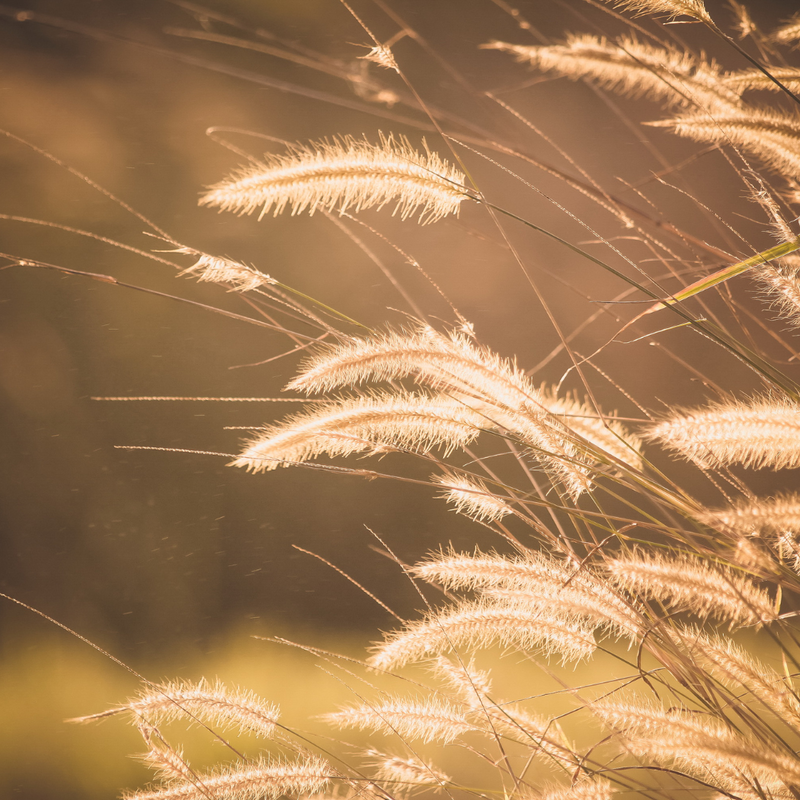

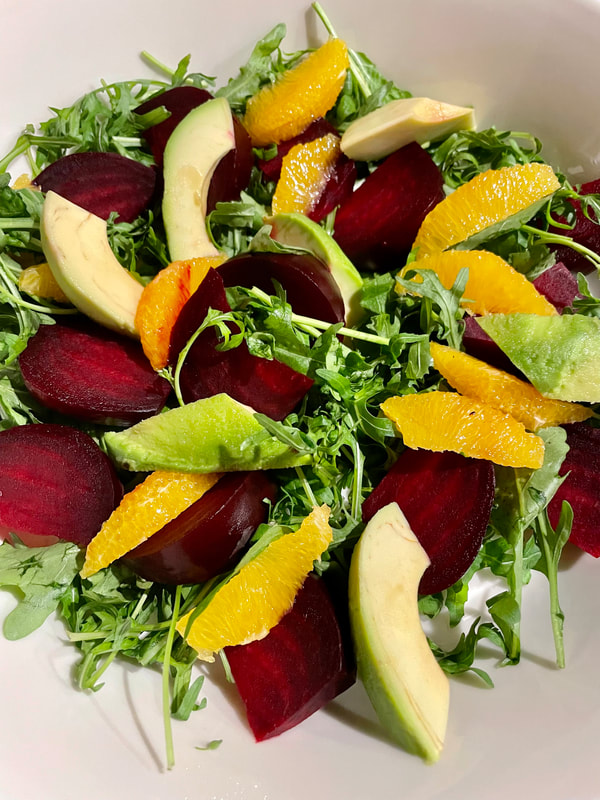





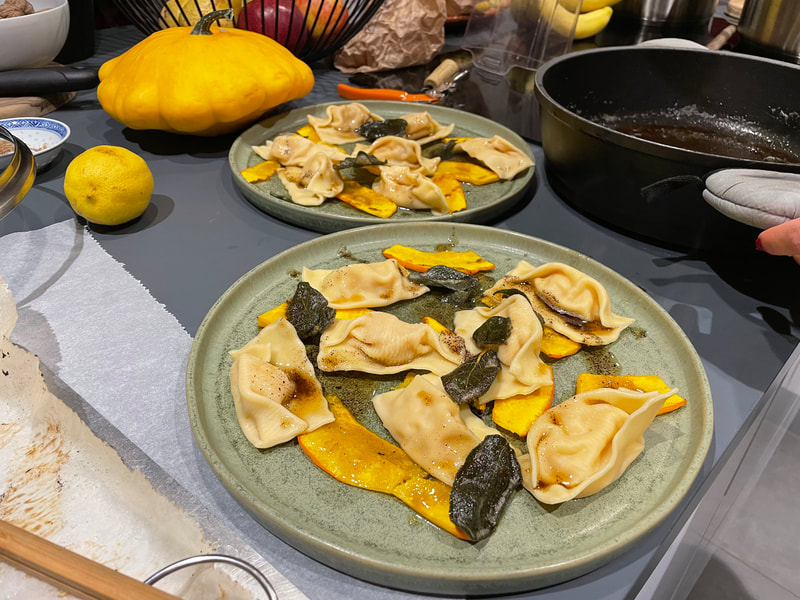







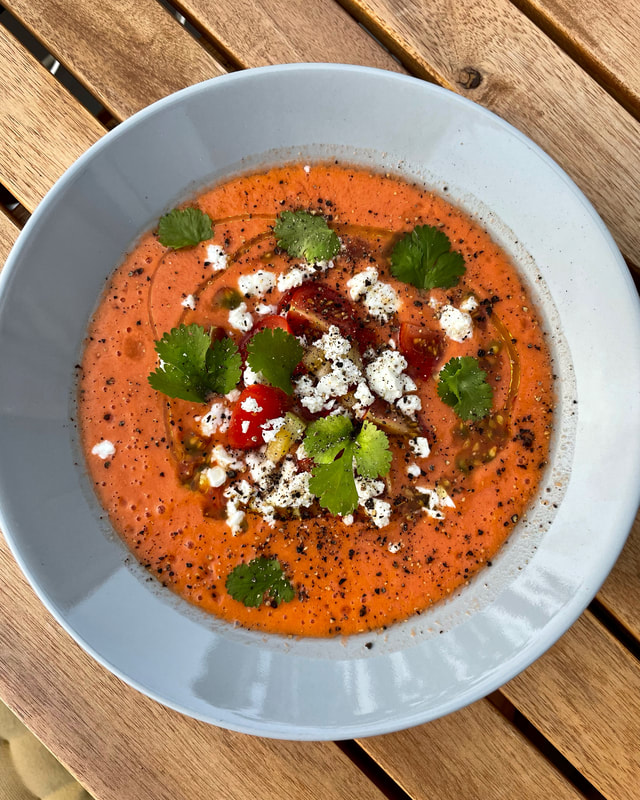






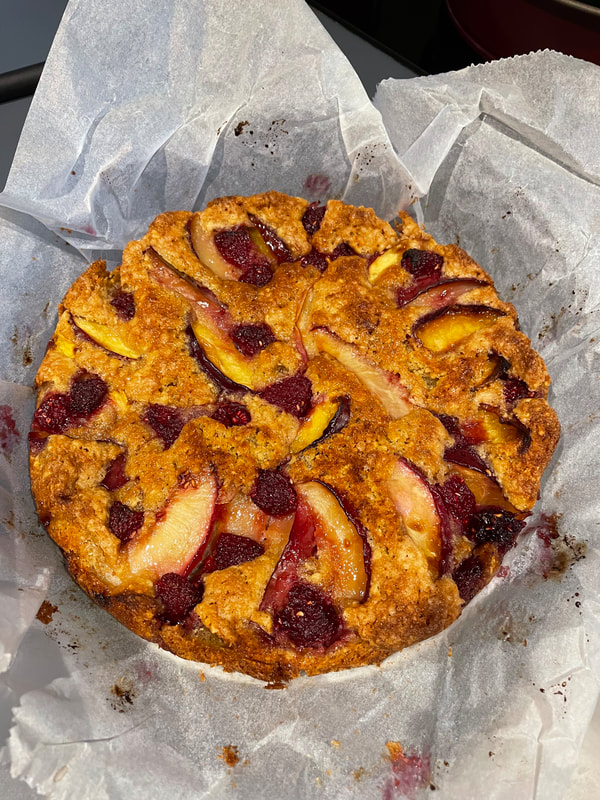
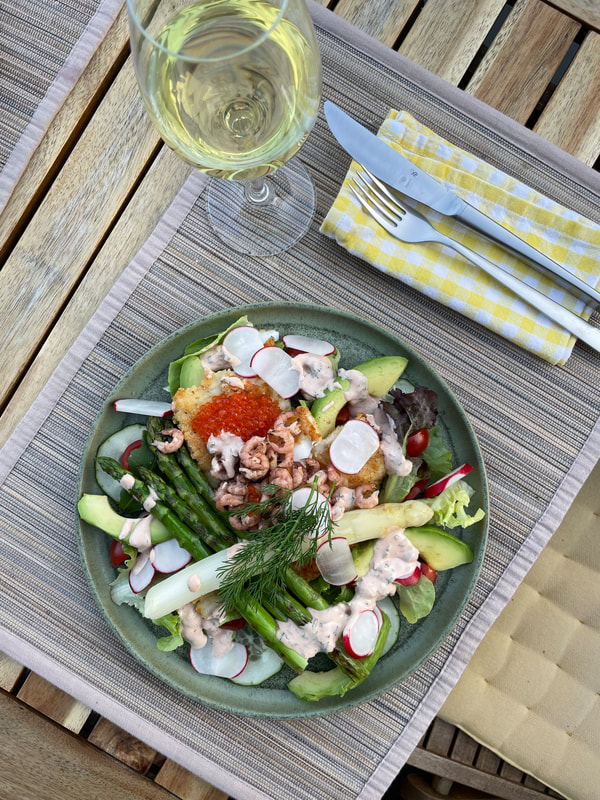
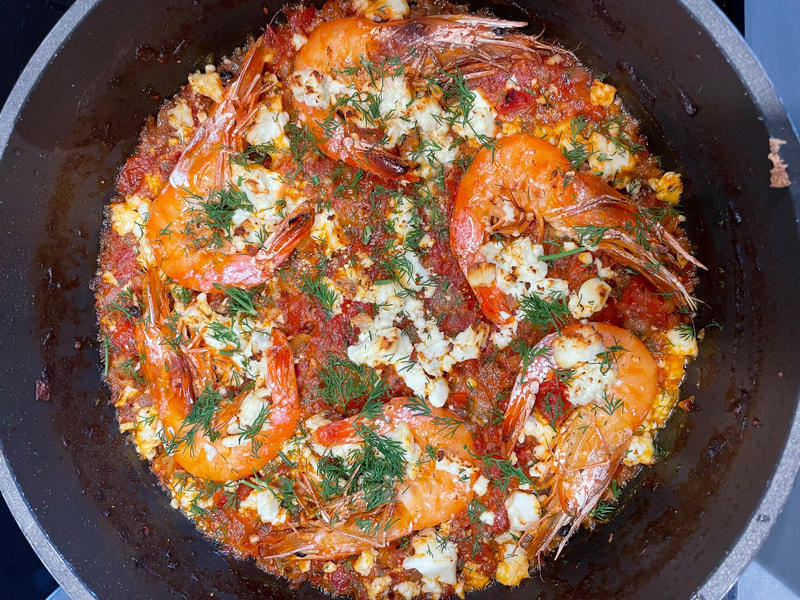
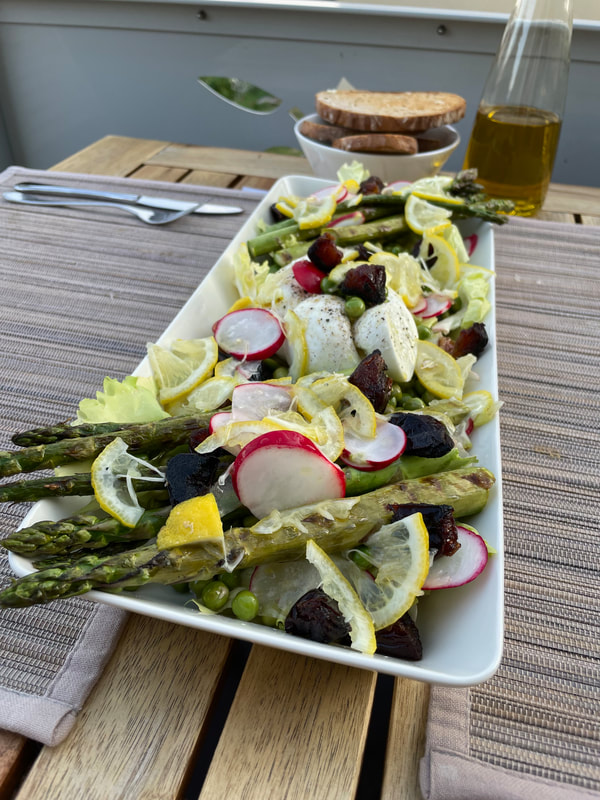
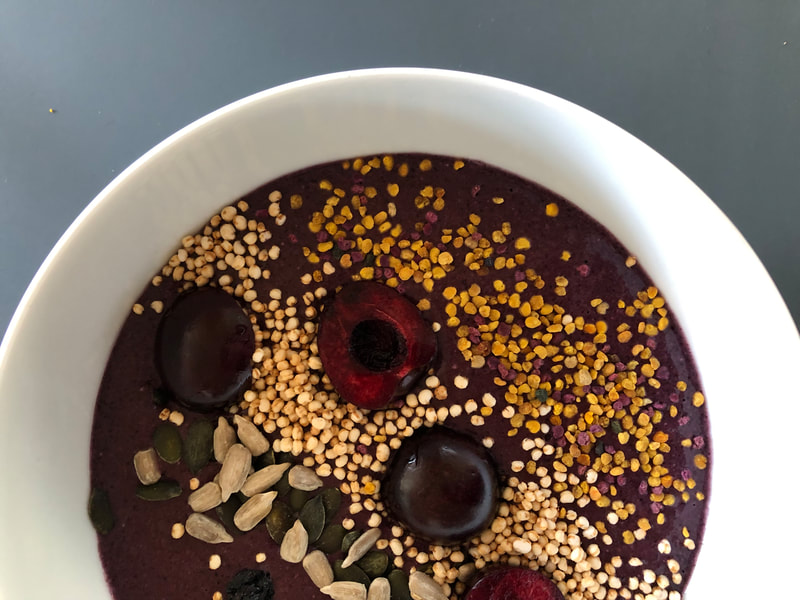
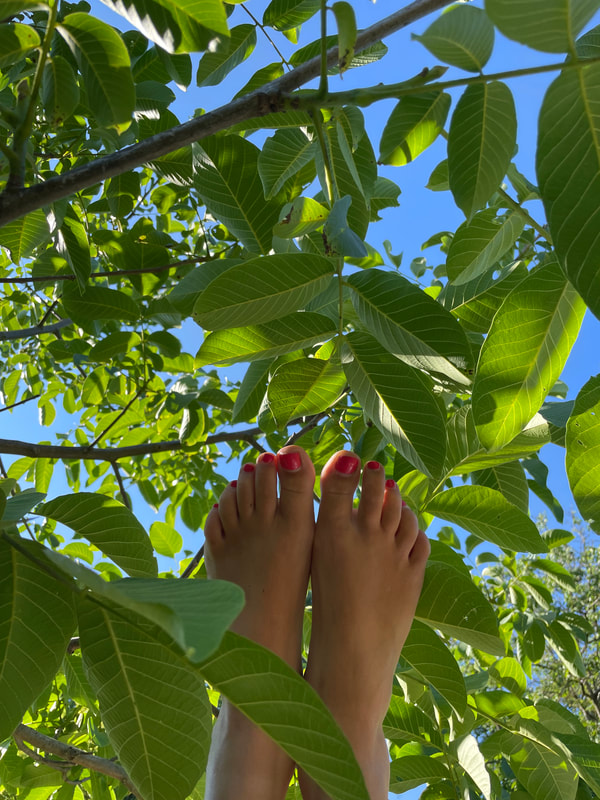



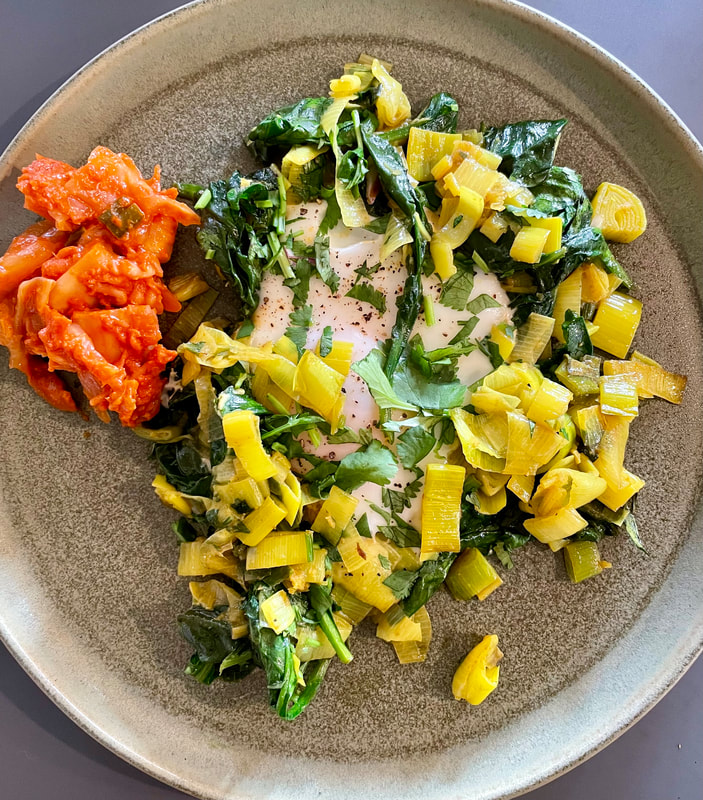


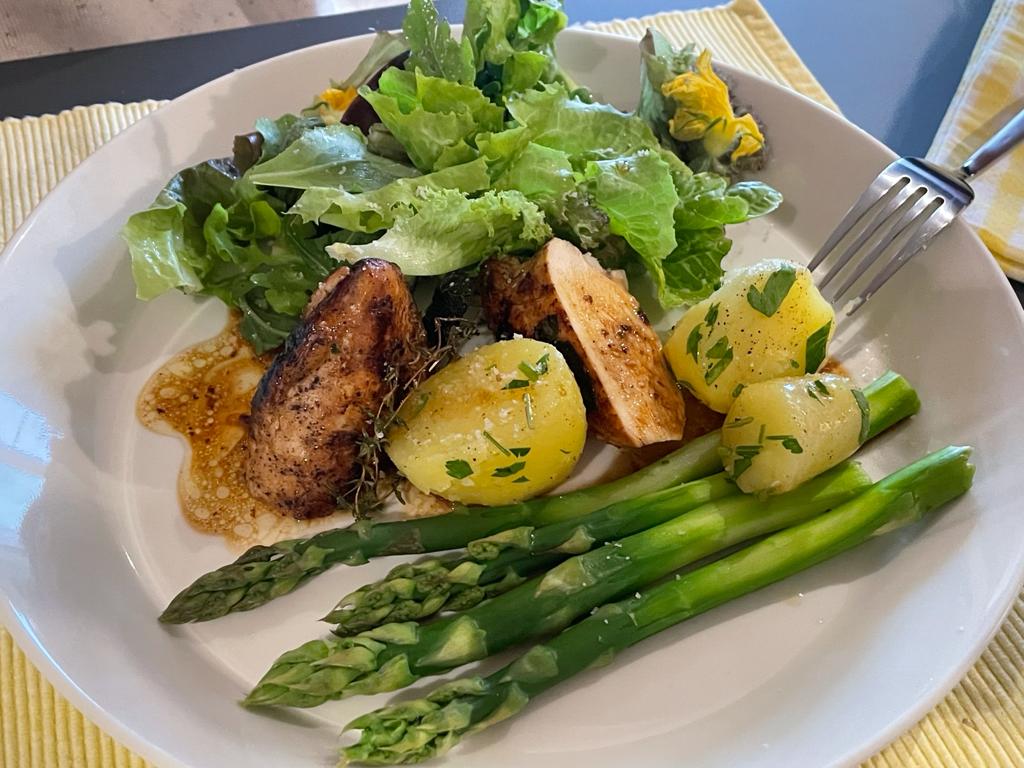
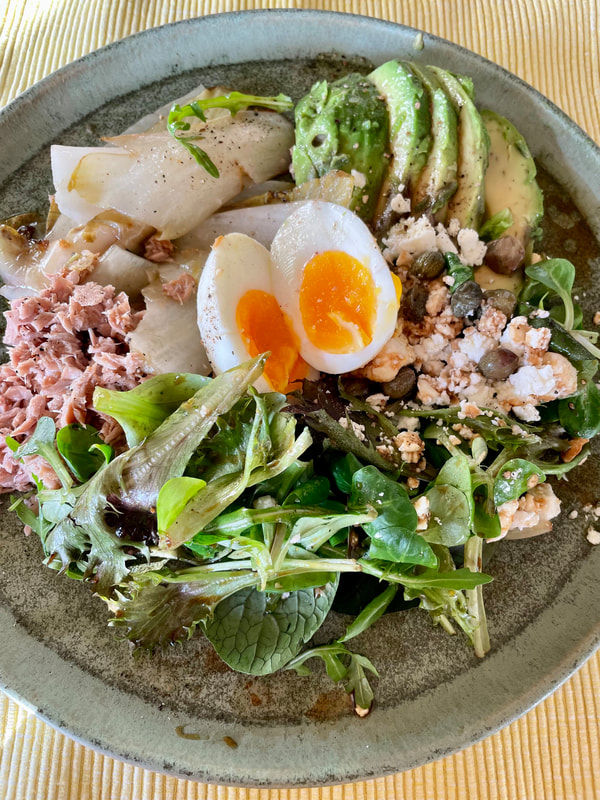

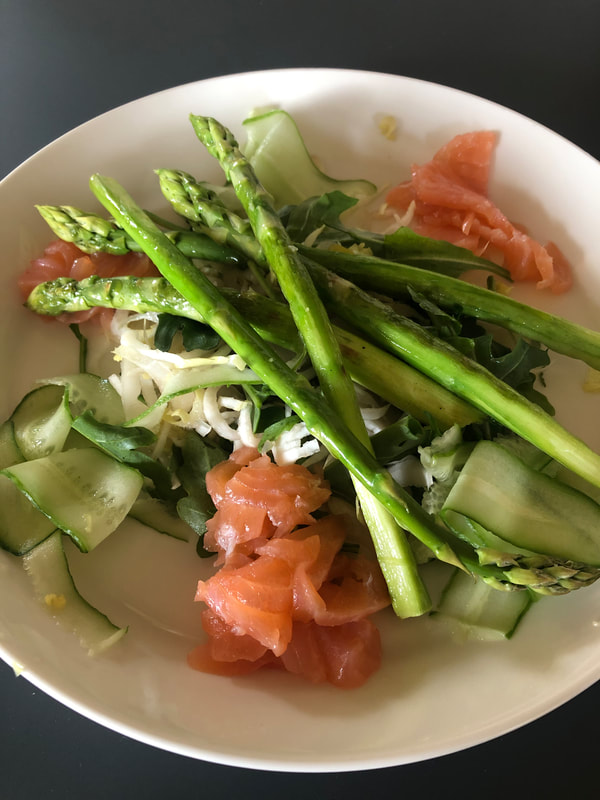

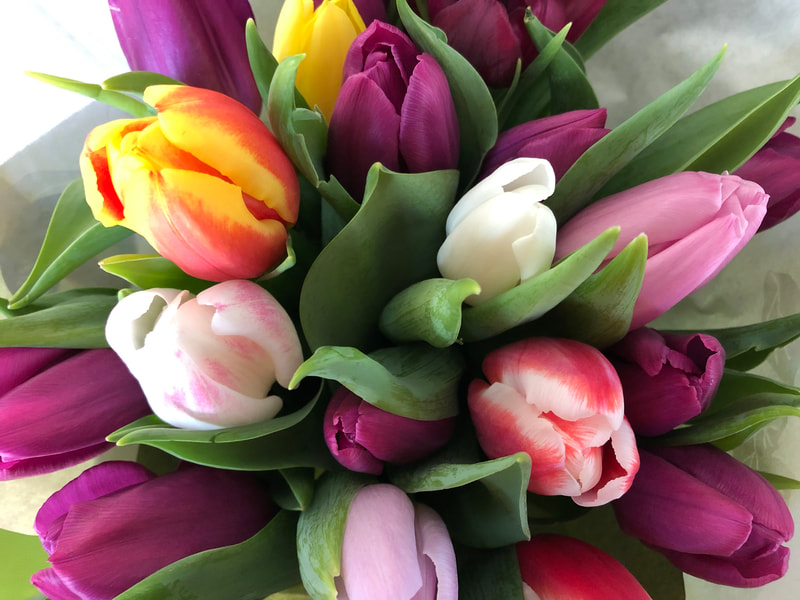
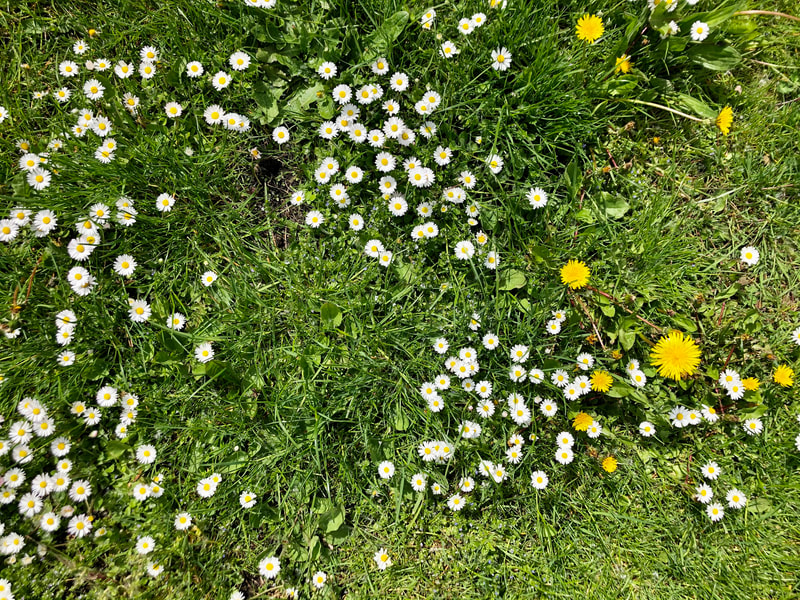
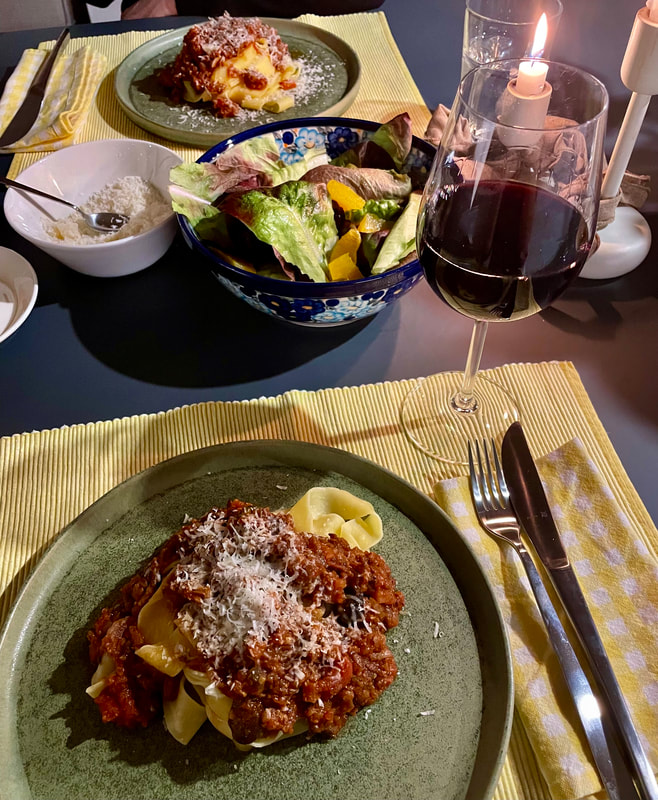


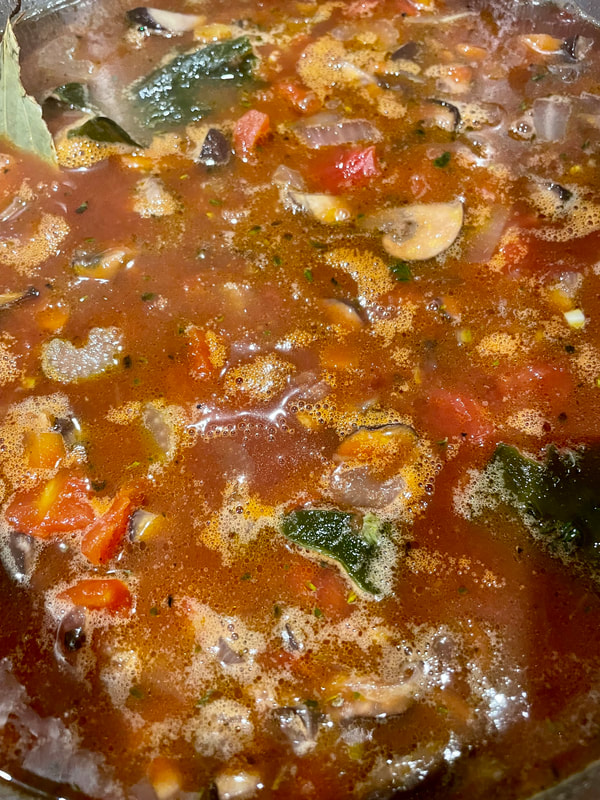

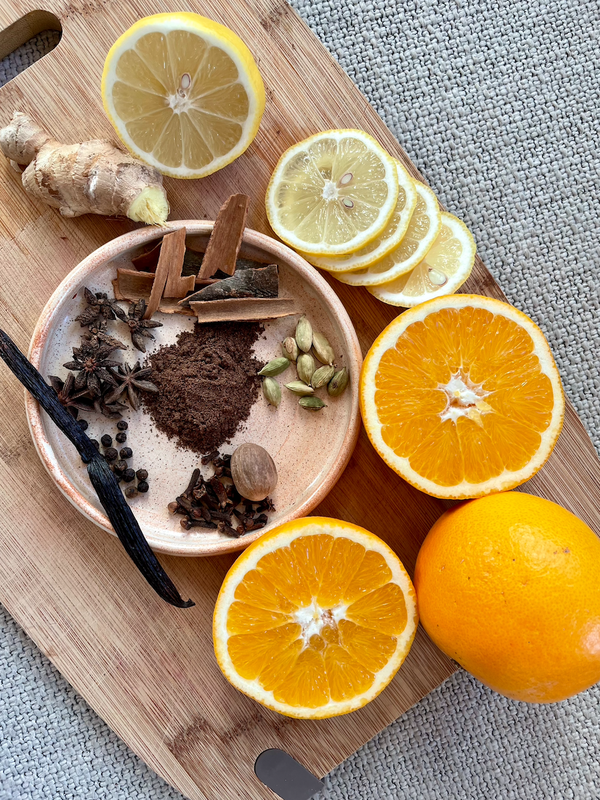
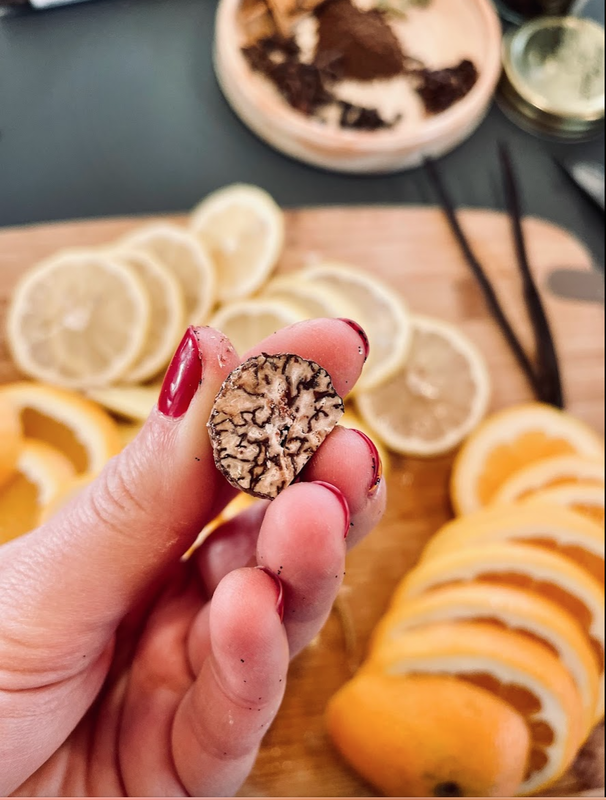





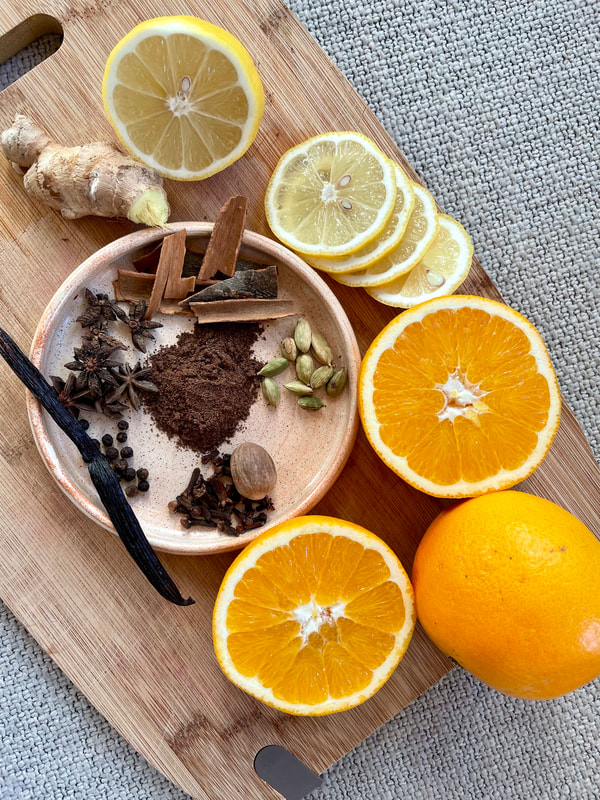


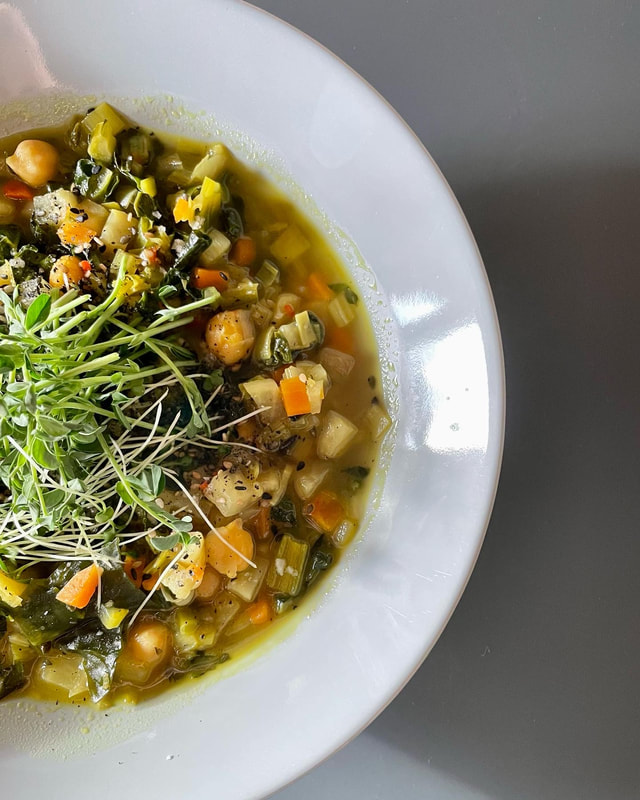


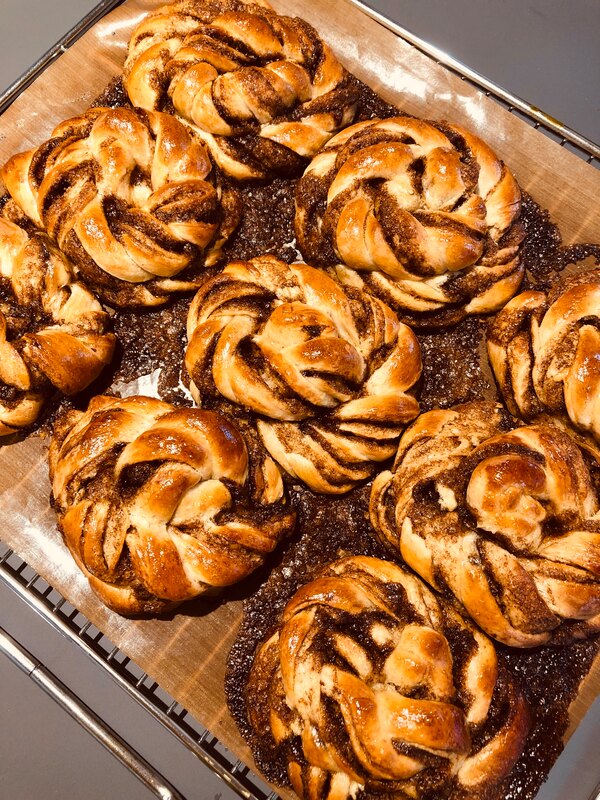
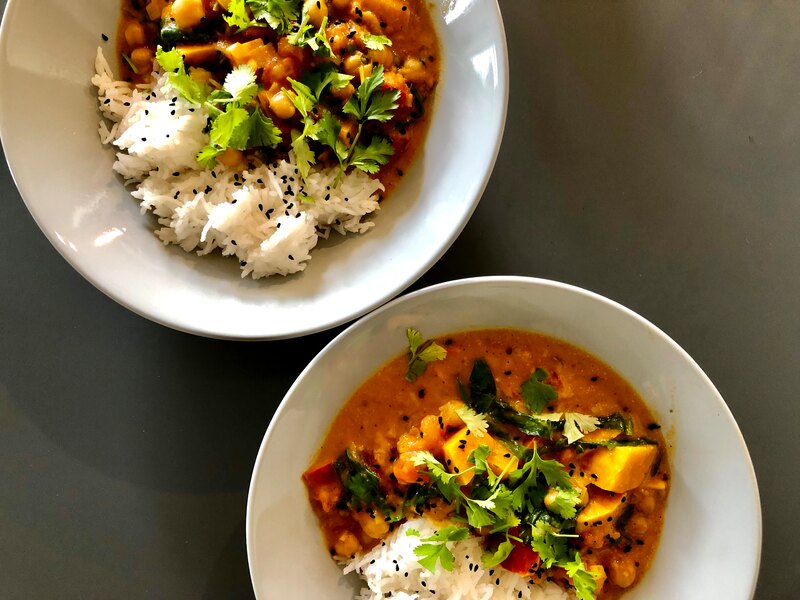

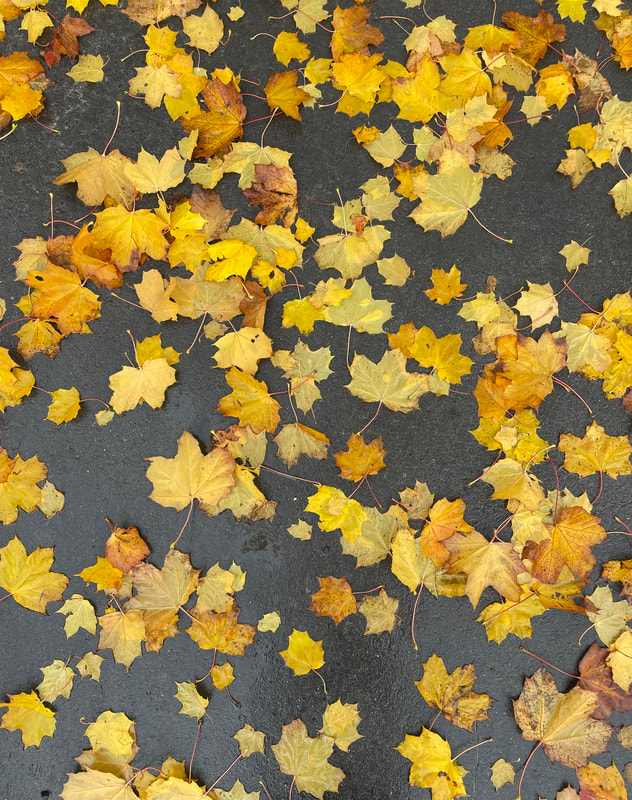


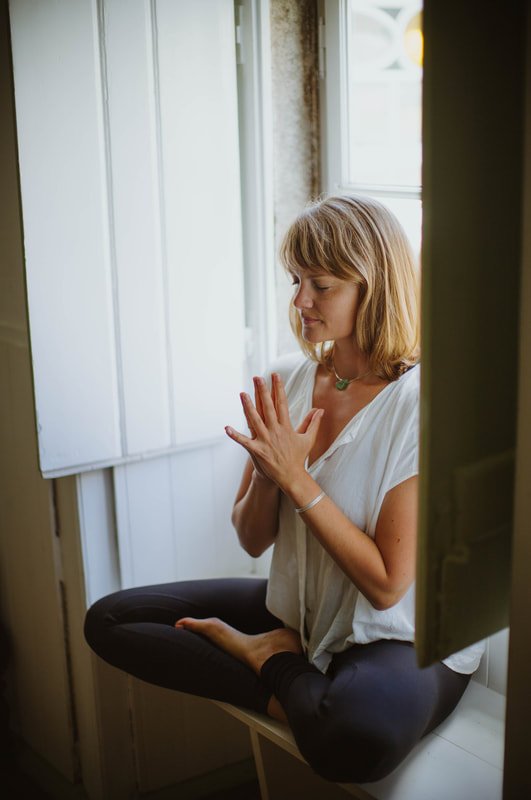
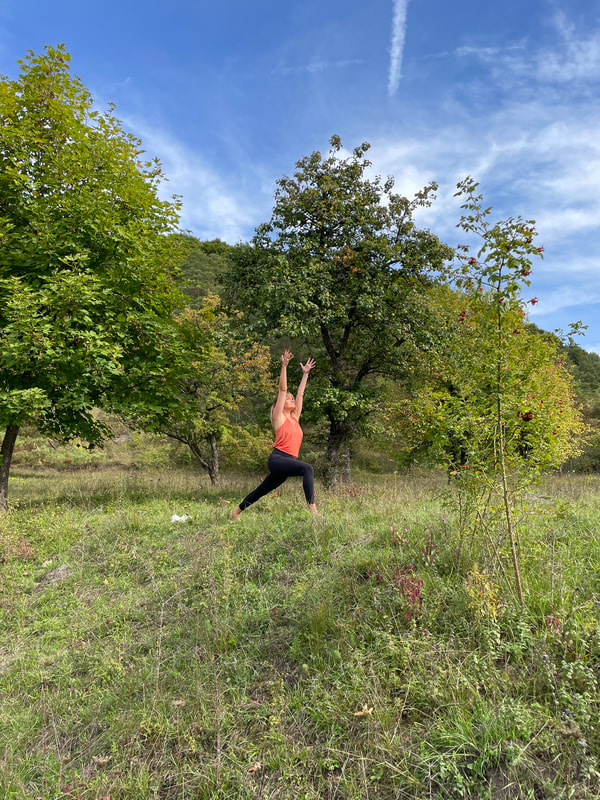
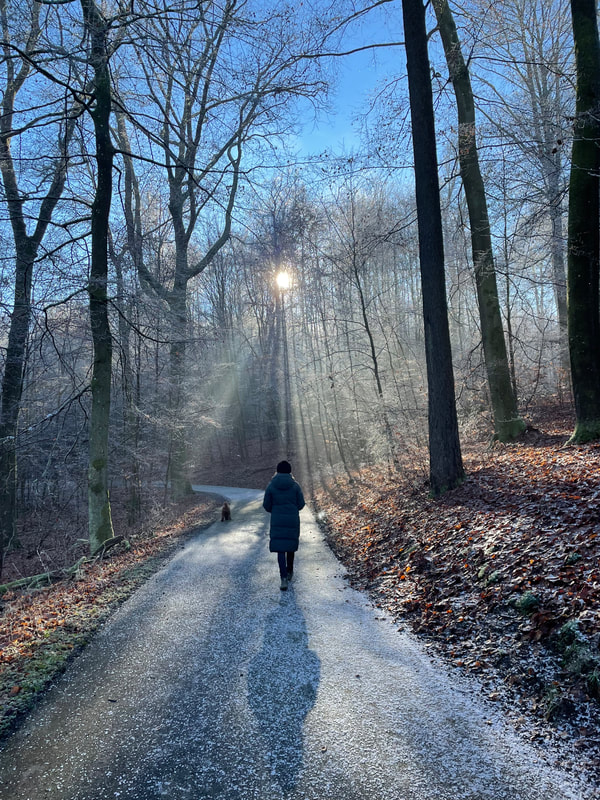






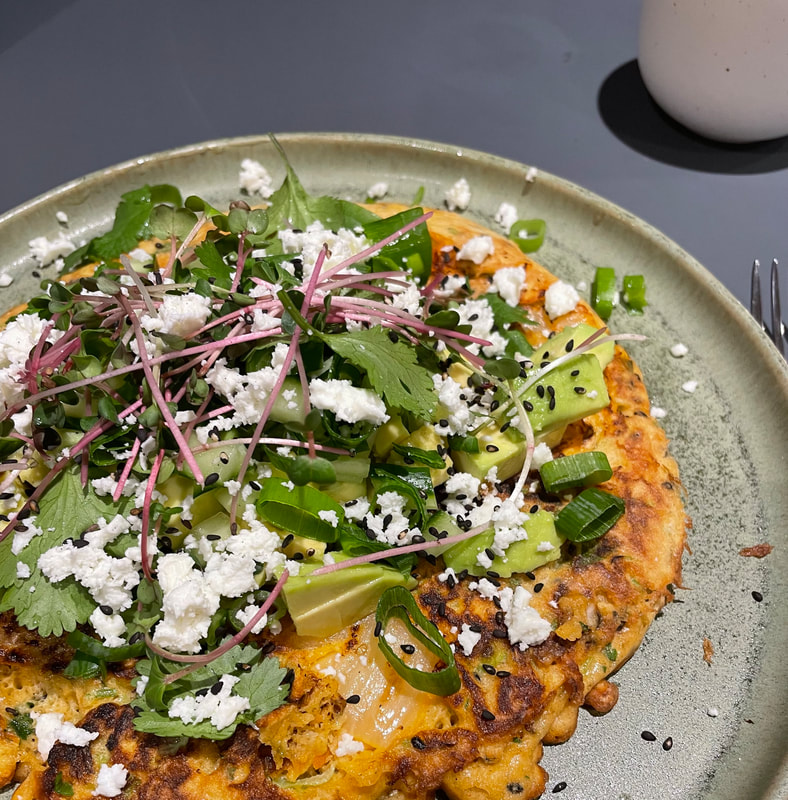

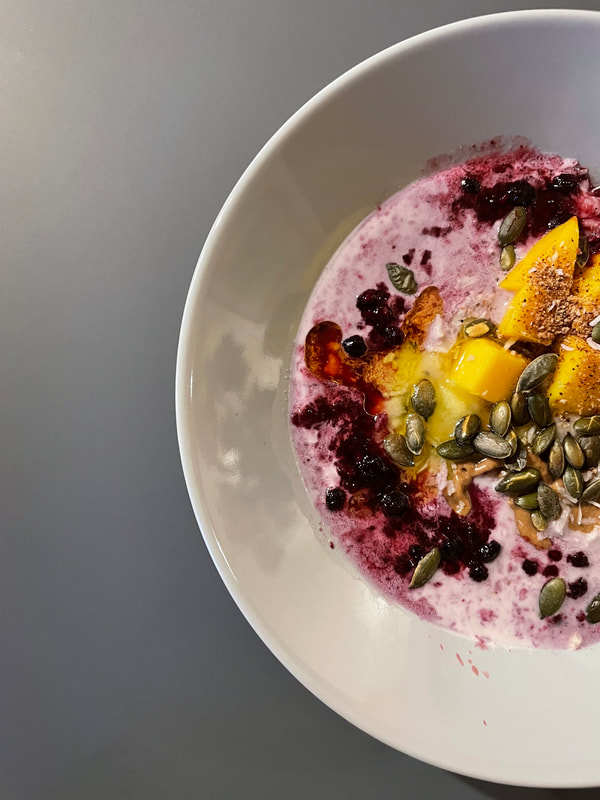

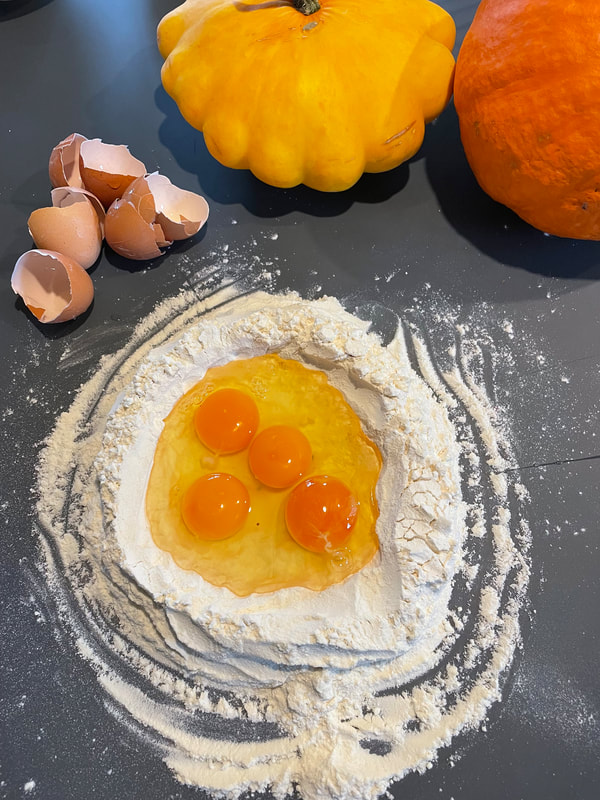
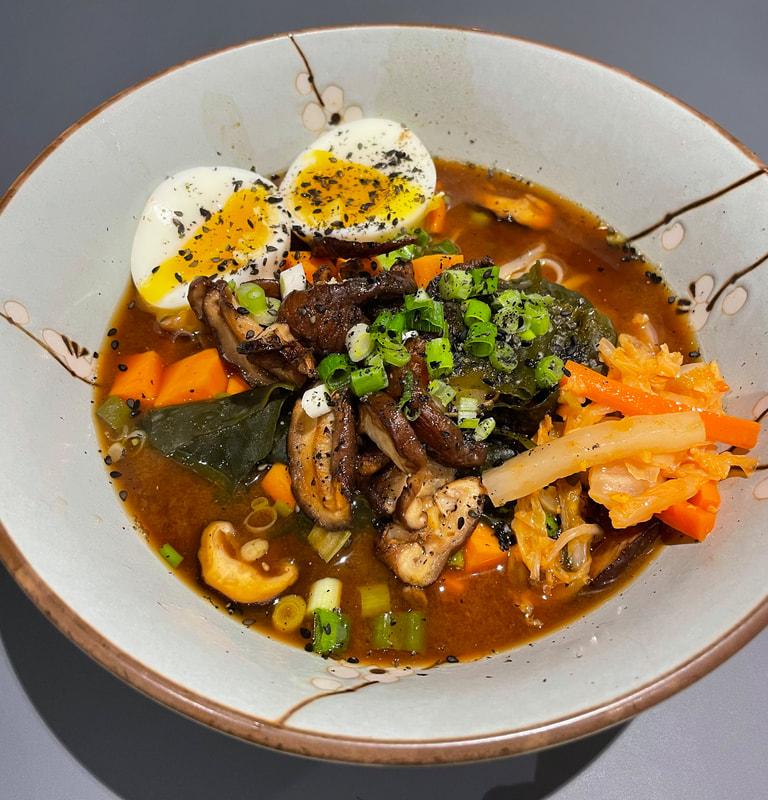
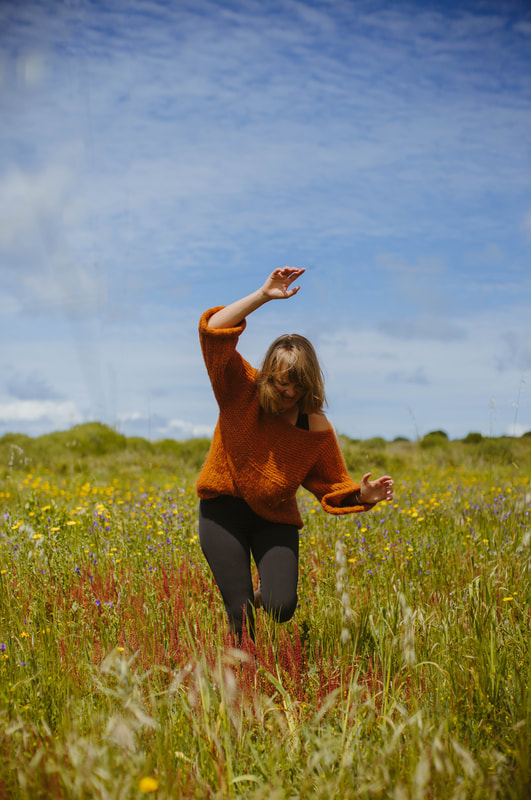



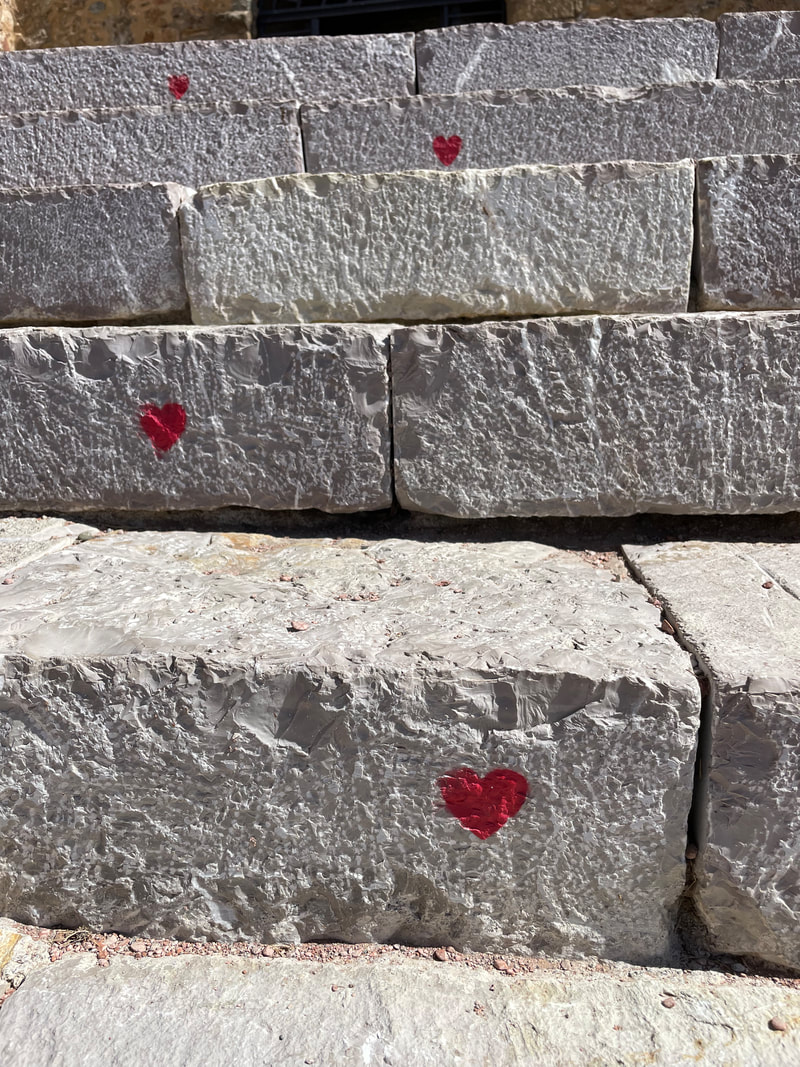
 RSS Feed
RSS Feed
